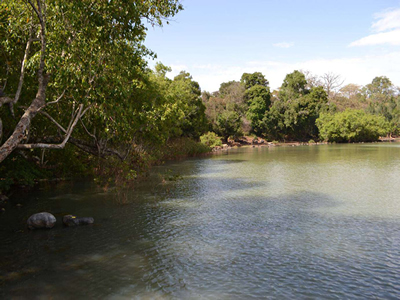Lake Tana, the largest lake, in Ethiopia is the source and from where the famed Blue Nile starts its long journey to Khartoum, and on to the Mediterranean. The 37 islands that are scattered about the surface of the lake shelter fascinating churches and monasteries, some of which have histories dating back to the 13th century. However, it should be noted that most of the religious houses are not open to women. The most interesting islands are: Birgida Mariam, Dega Estephanos, Dek, Narga, Tana Cherkos, Mitsele Fasiladas, Kebran and Debre Mariam.
 Click Here for Tour Itineraries
Click Here for Tour Itineraries
 Kebran Gabriel is the principal monastery visited by male tourists, with its impressive cathedral - like building first build at the end of the 17th century. Dega Estephanos, which is also closed to women, is on an island in the lake, and the monastery is reached by a very steep and winding path. Although the church is relatively new (only hundred years old), it houses a Madonna painted in the 15th century. However, the treasury of the Monastery is a prime attraction, with the remains of several Emperors, as well as their robes and jewels.
Kebran Gabriel is the principal monastery visited by male tourists, with its impressive cathedral - like building first build at the end of the 17th century. Dega Estephanos, which is also closed to women, is on an island in the lake, and the monastery is reached by a very steep and winding path. Although the church is relatively new (only hundred years old), it houses a Madonna painted in the 15th century. However, the treasury of the Monastery is a prime attraction, with the remains of several Emperors, as well as their robes and jewels.
On the peninsula Zegay are many more monasteries, such as Ura Kidane Mehret and Azwa Mariam, many of which are also open to be visited by women.
Near Gorgora, at the northern end of the lake, the Susneyos palace is a forerunner of the magnificent palaces and castles of Gonder, and dates from the reign of Emperor Susneyos. In the same area the medieval church of Debre Sina Mariam is particularly important.
A sail or cruise on Lake Tana is one of the most pleasant excursions for visitors to this region, particularly in the heart of the summer. Along the lakeshore bird life, both local and migratory visitors, make this an ideal place for birdwatchers.
Bird lovers will not want to miss Fasiladas Island, which is especially famous as an important wetland. The whole of the Lake Tana region and the Blue Nile Gorge have a wide variety of birds both endemic and visitors. The variety of habitats, from rocky crags to riverain forests and important wetlands, ensure that many other different species should be spotted.
